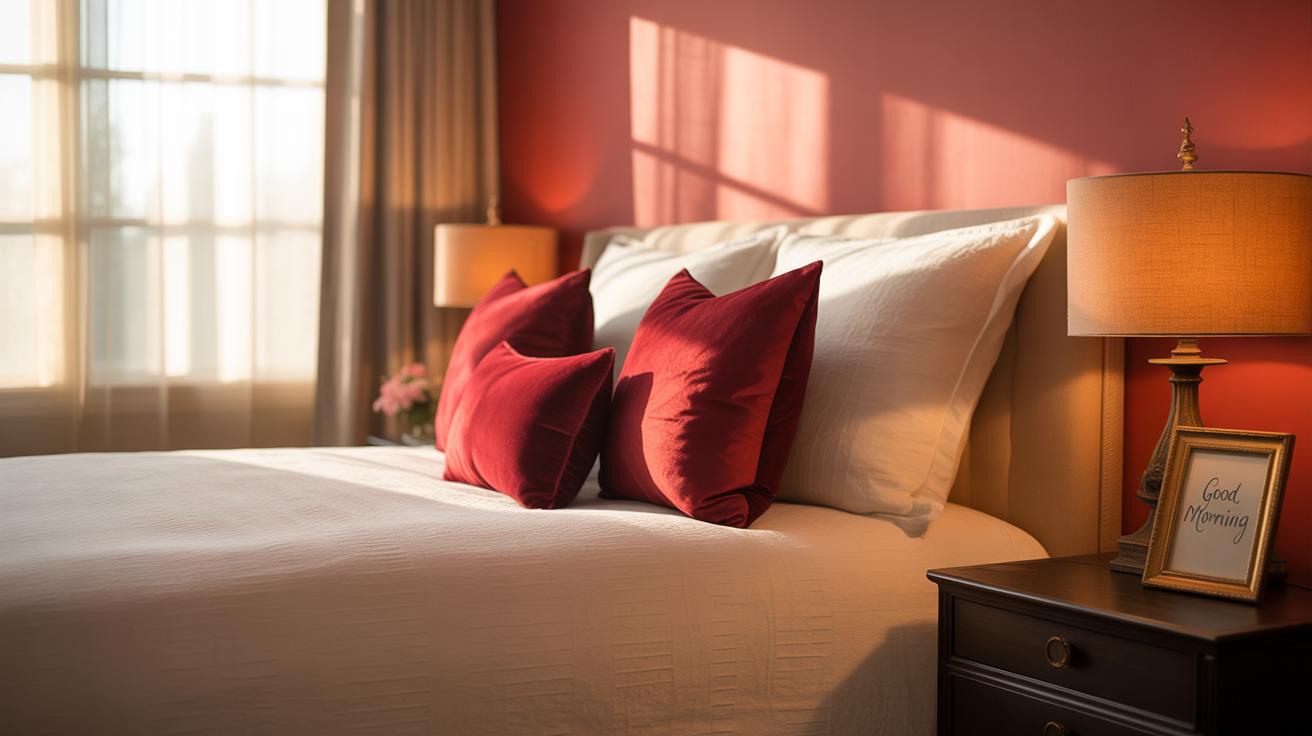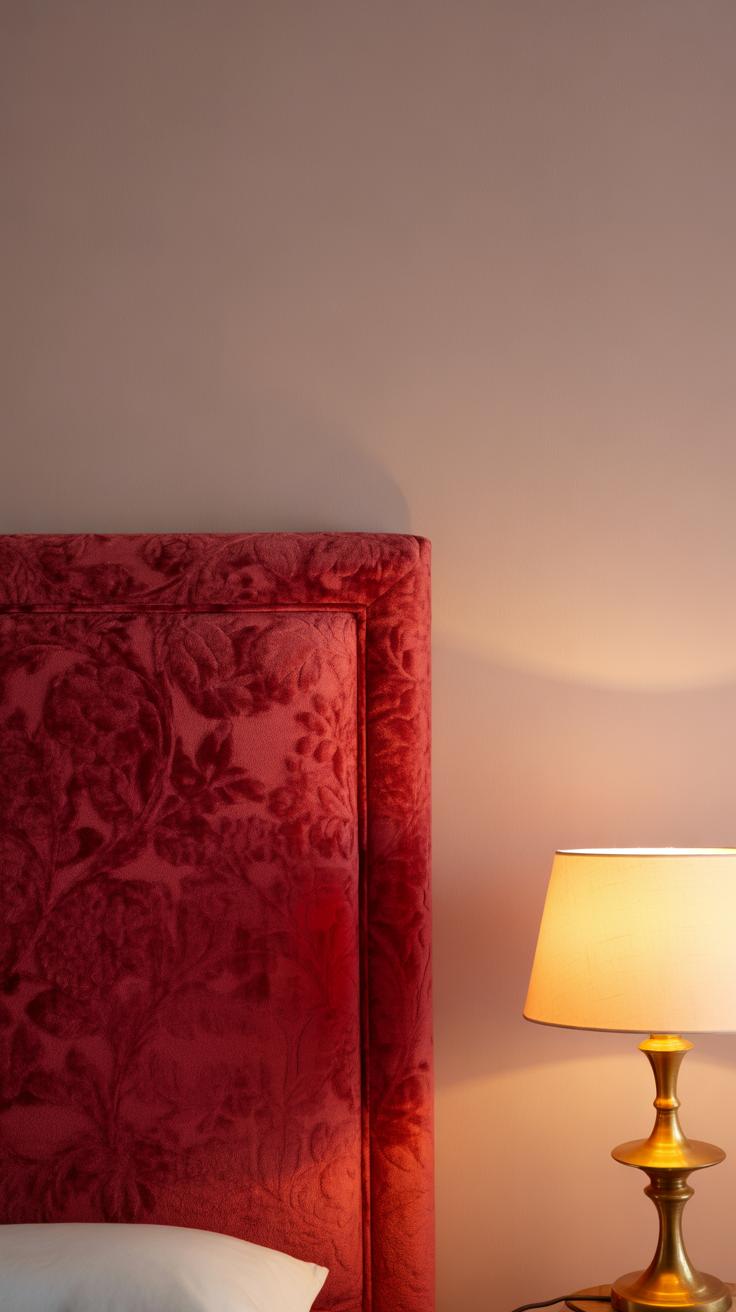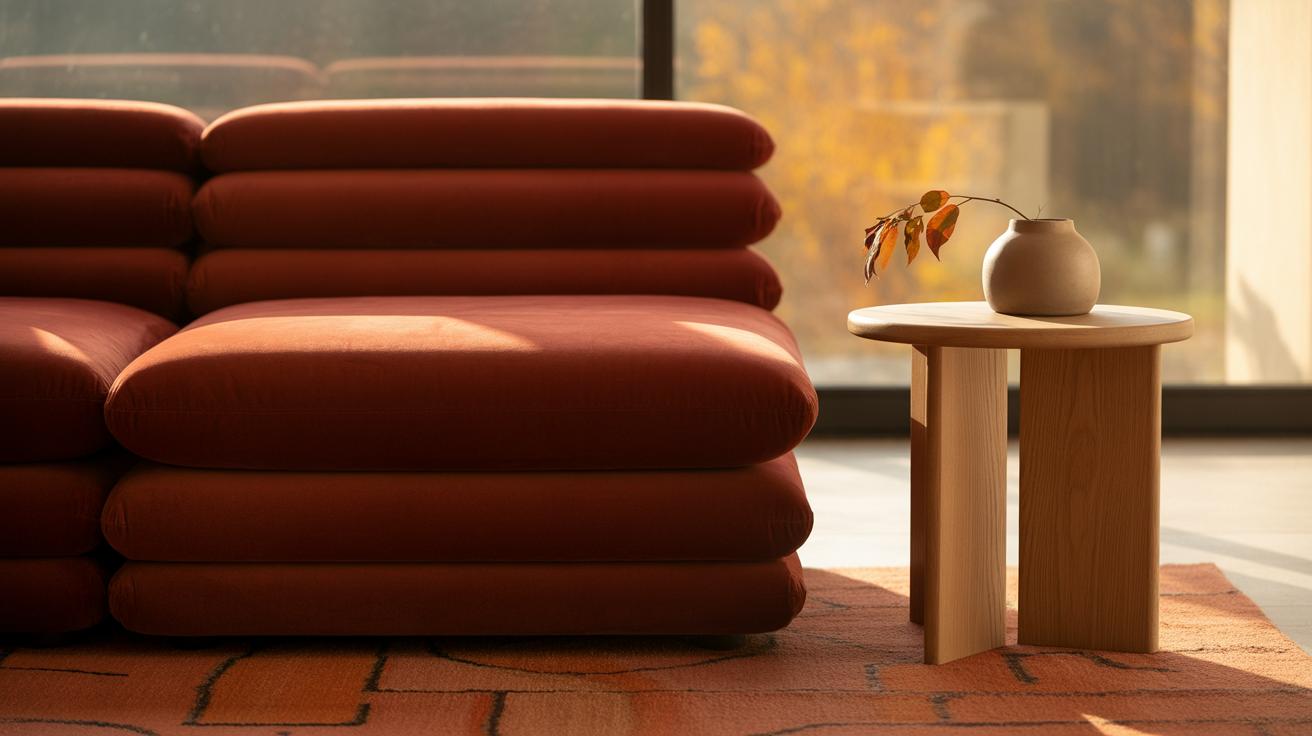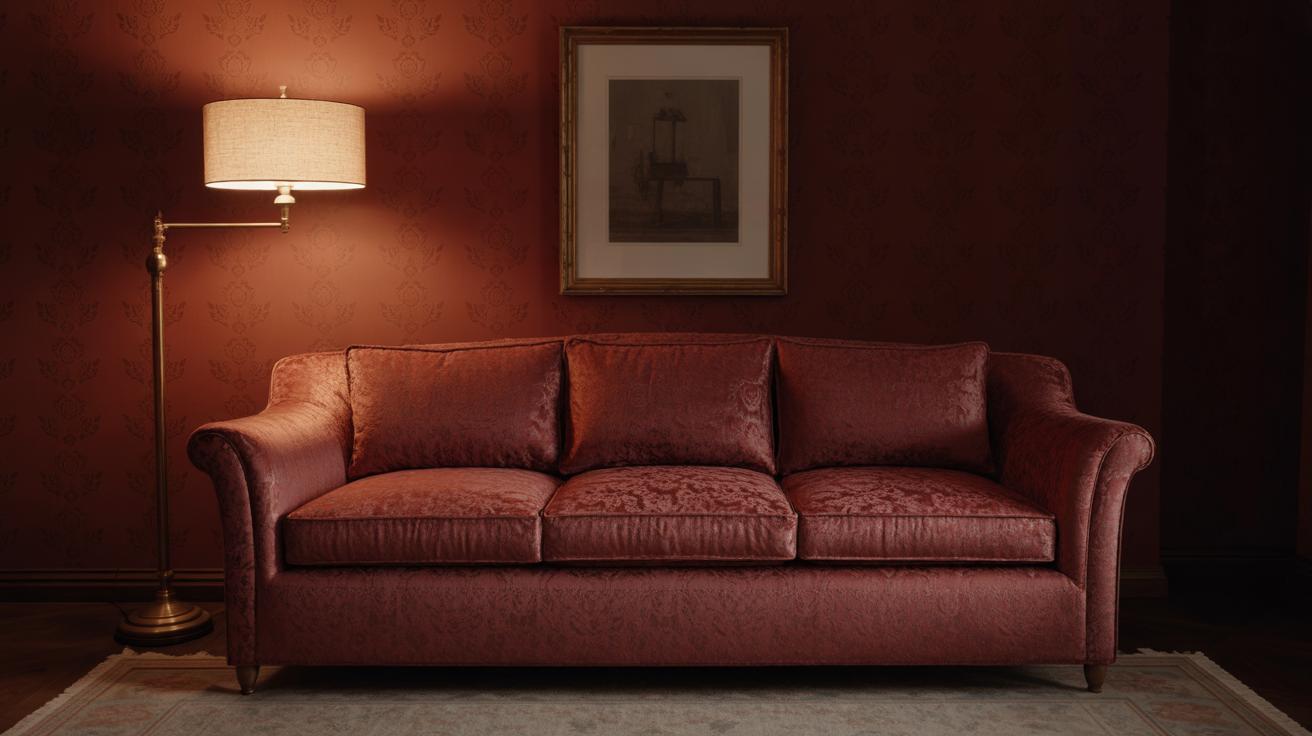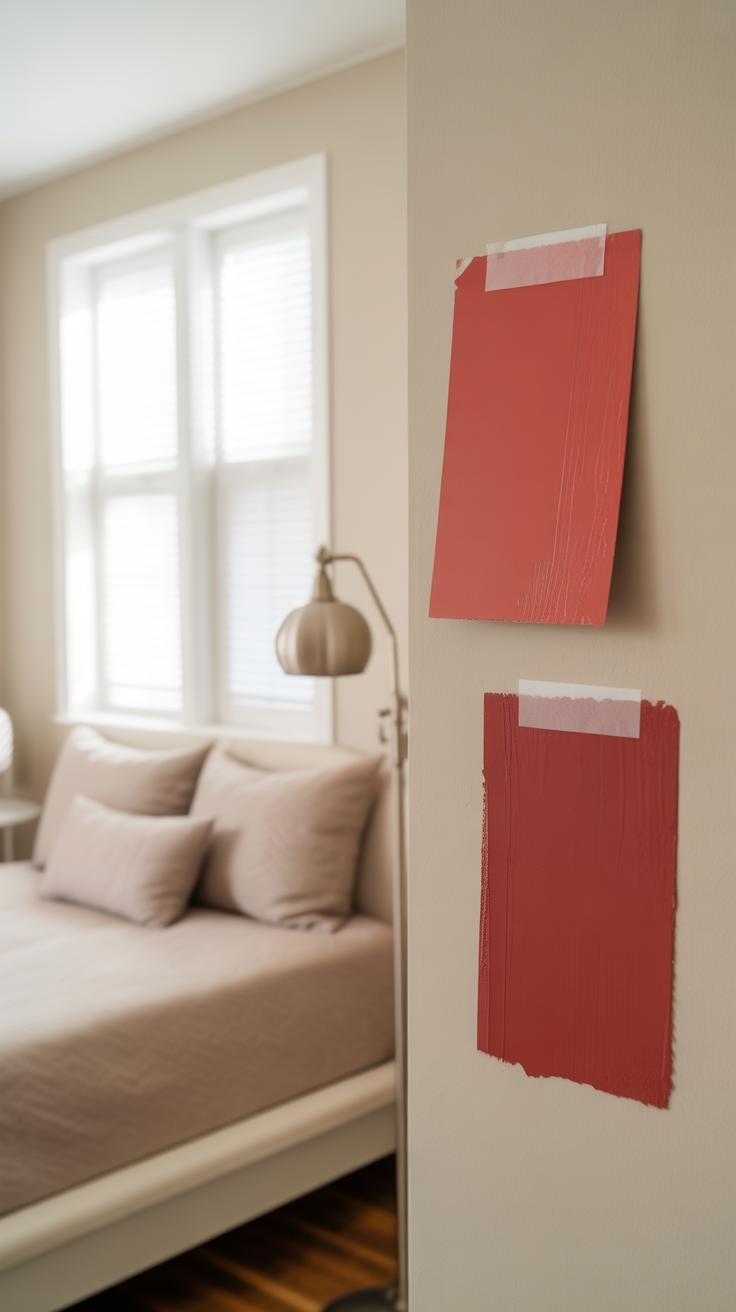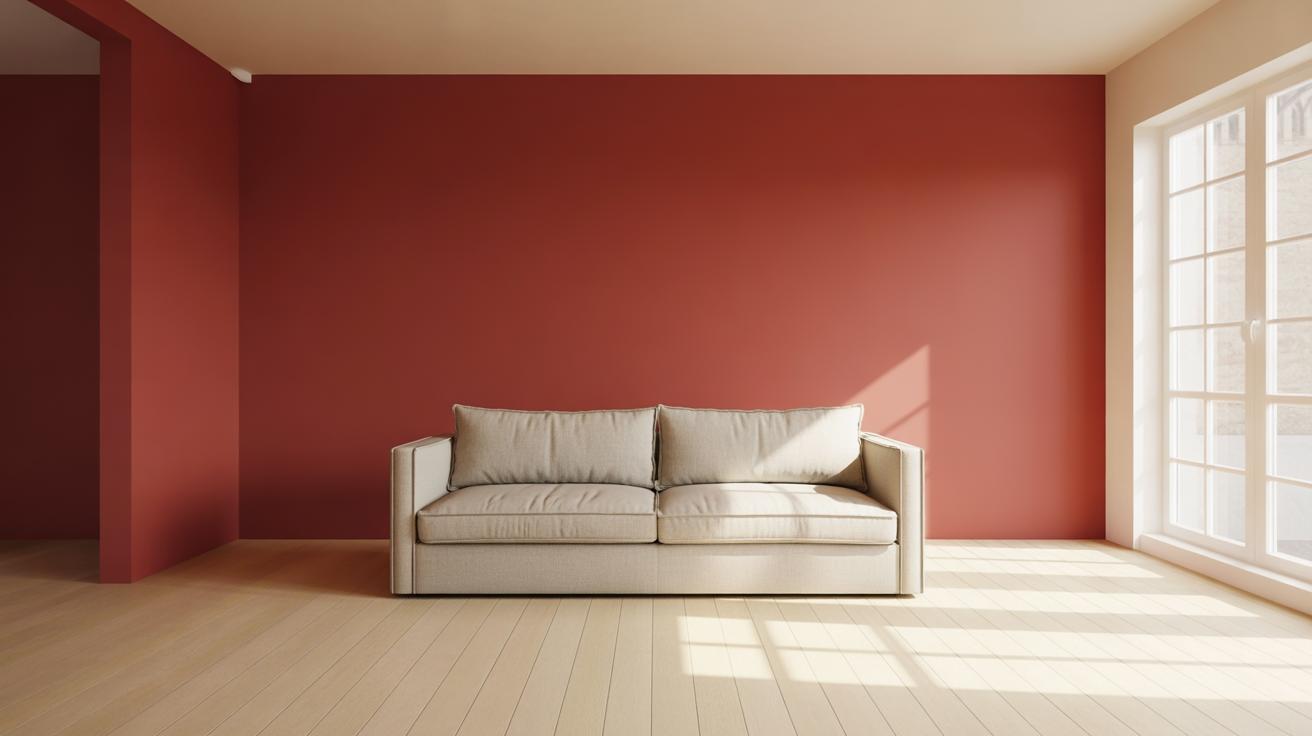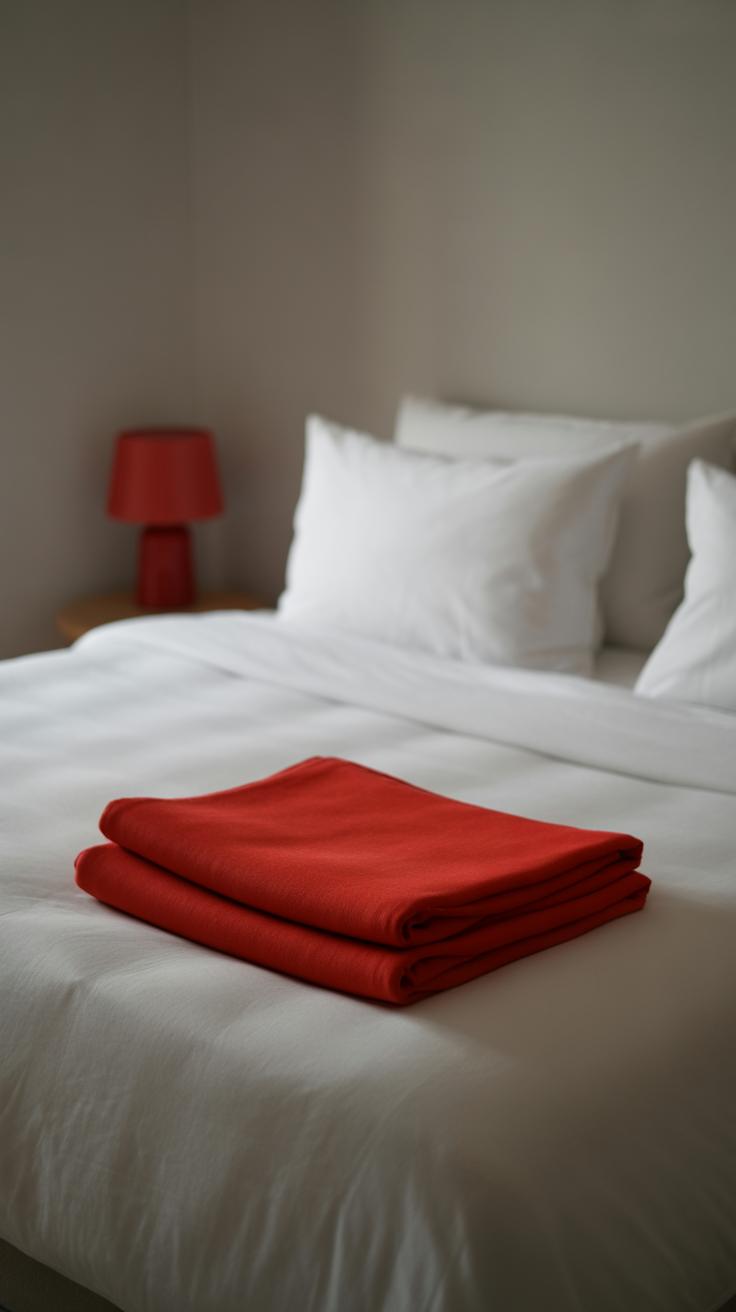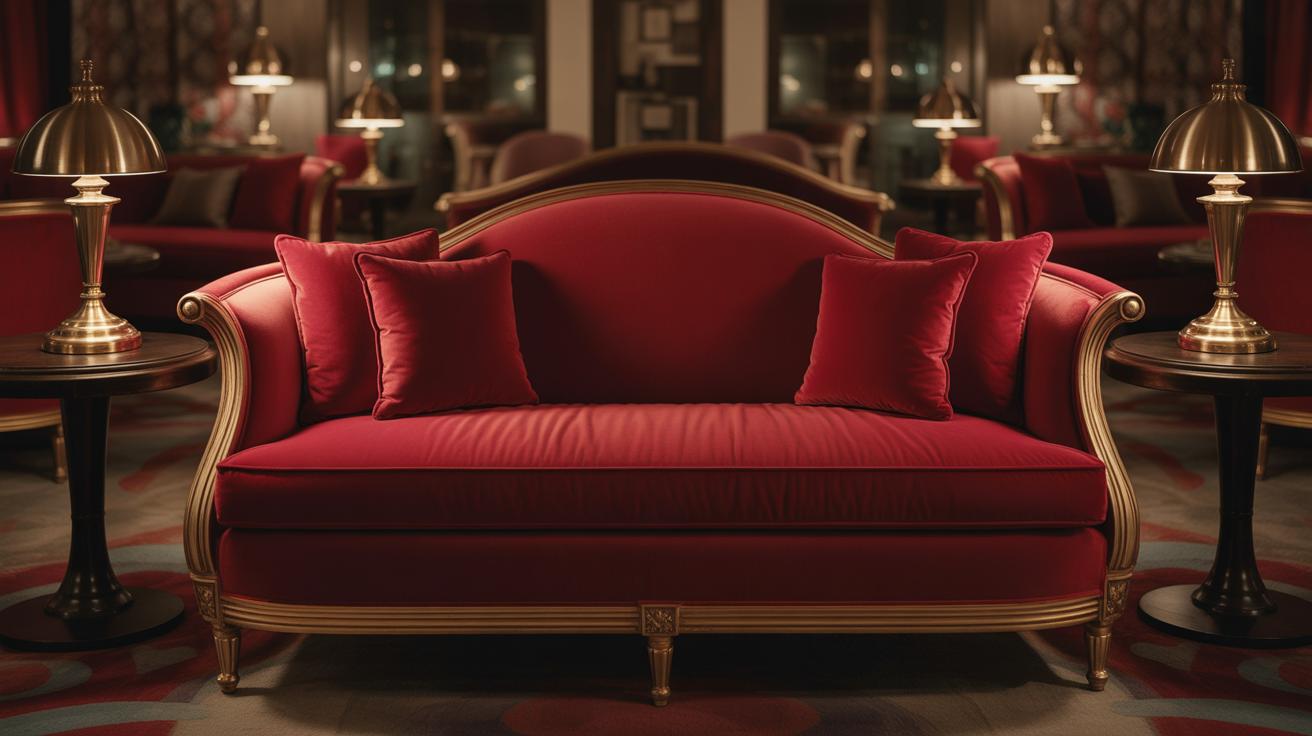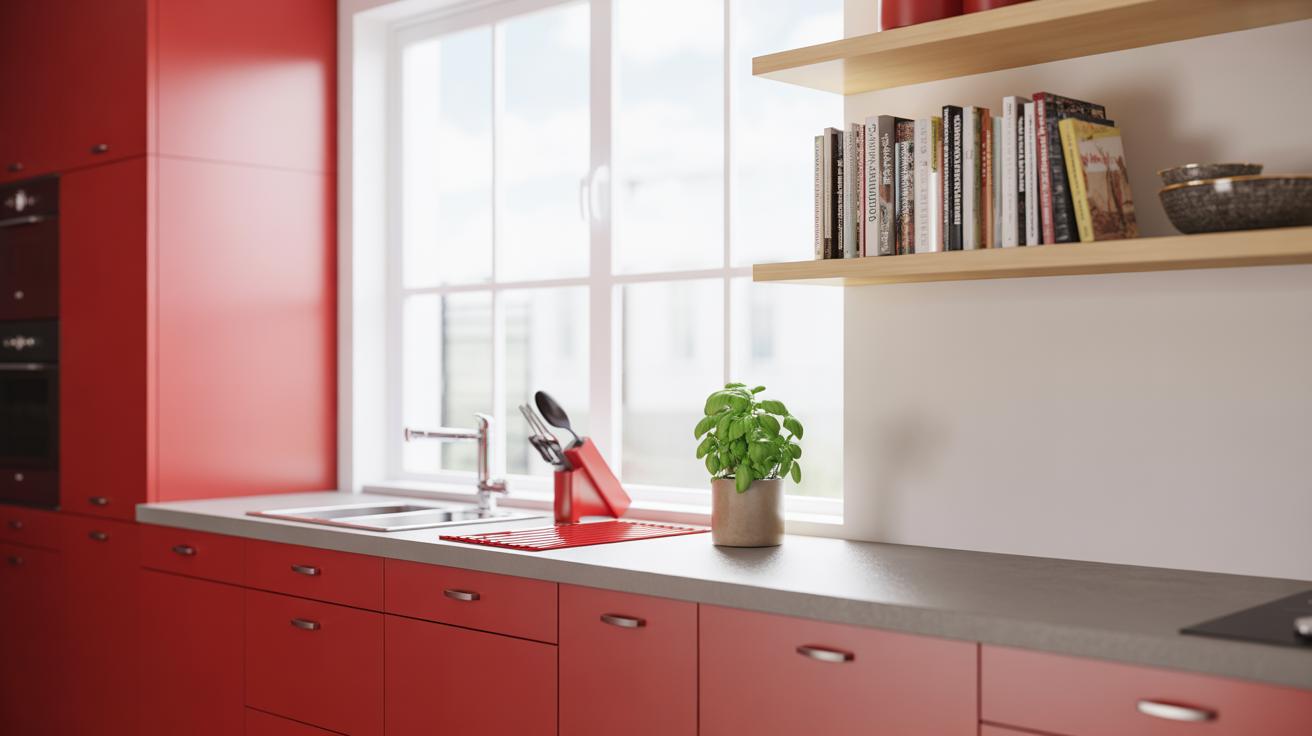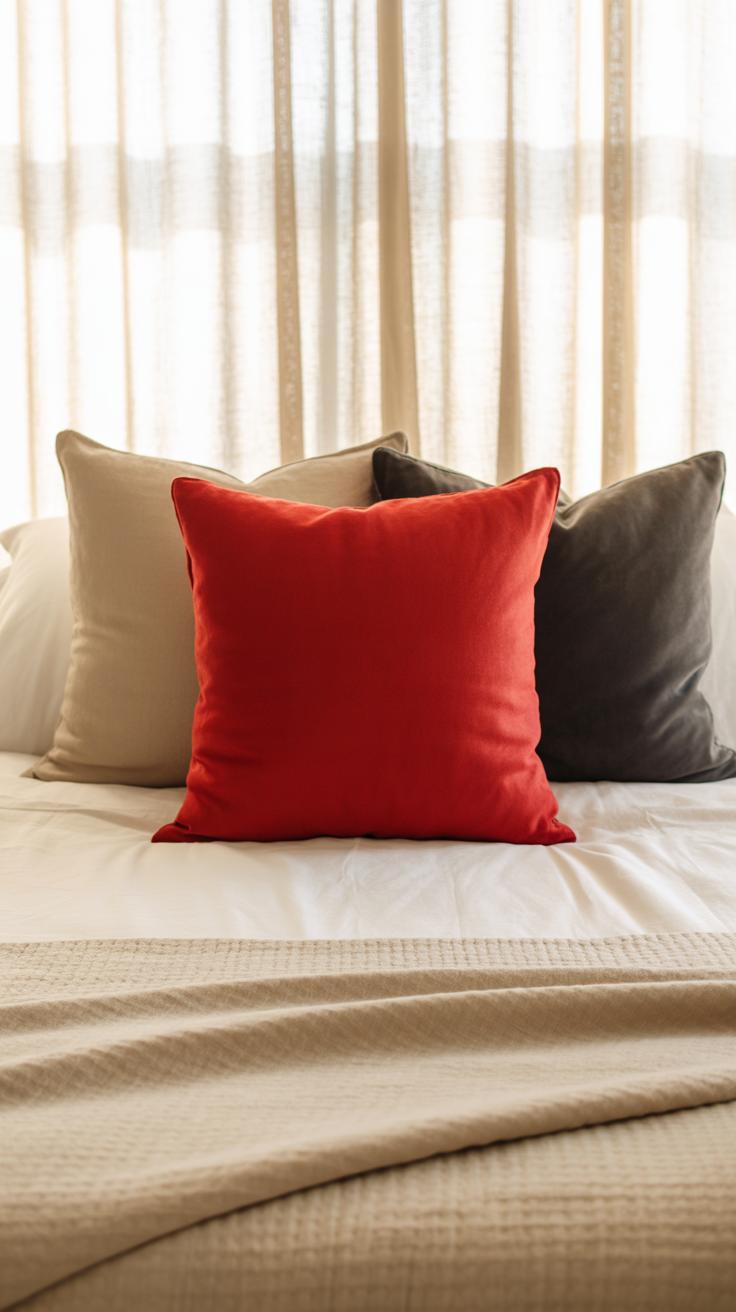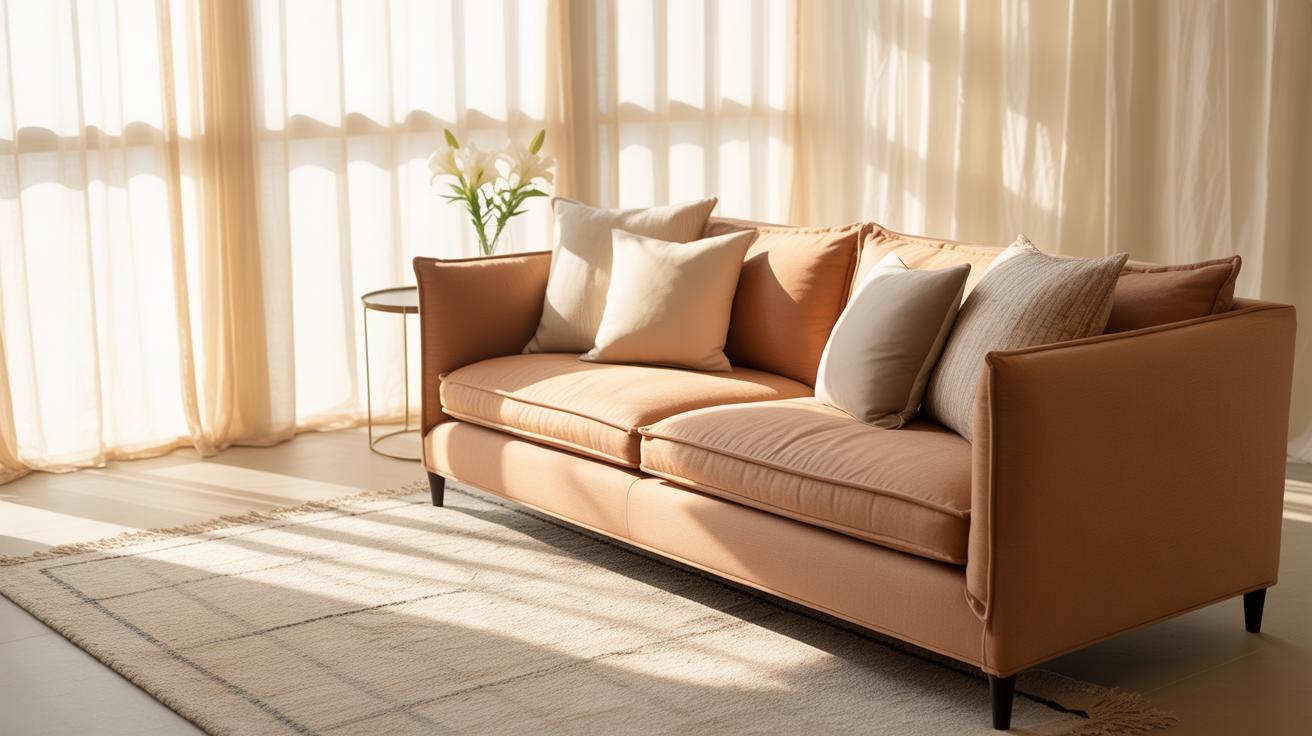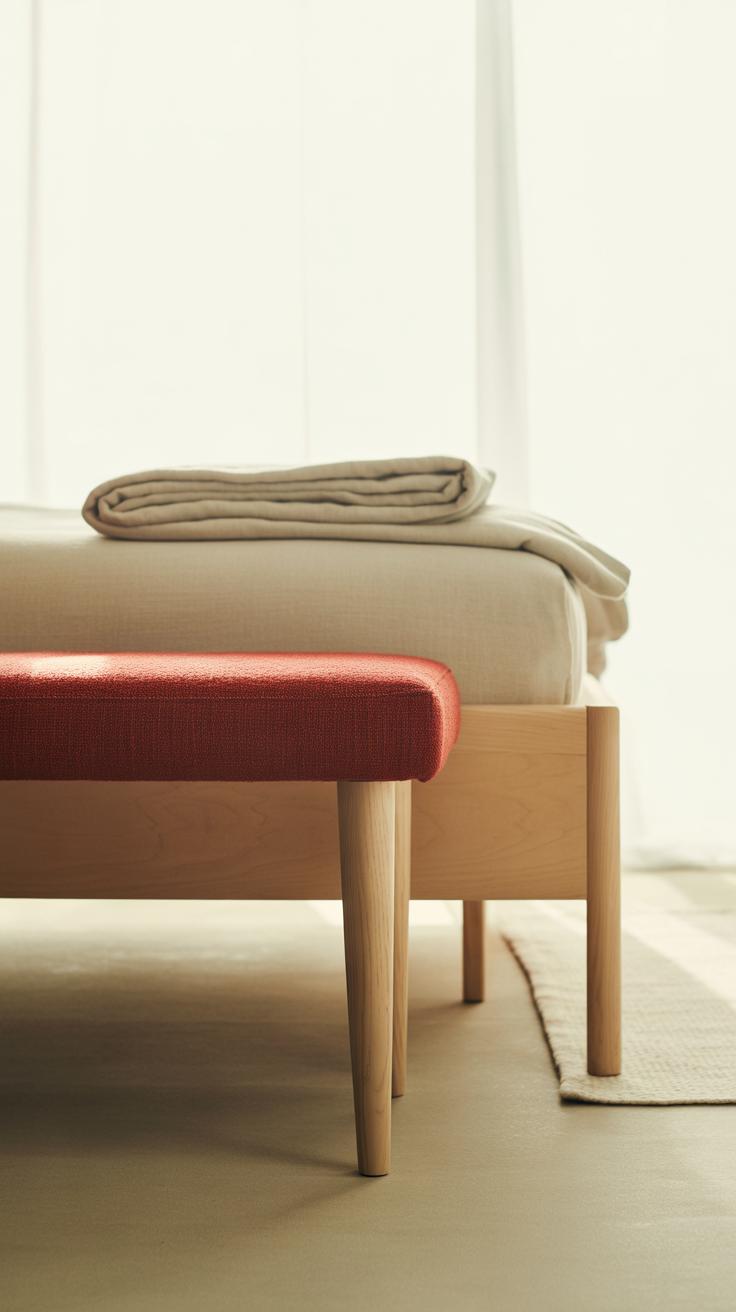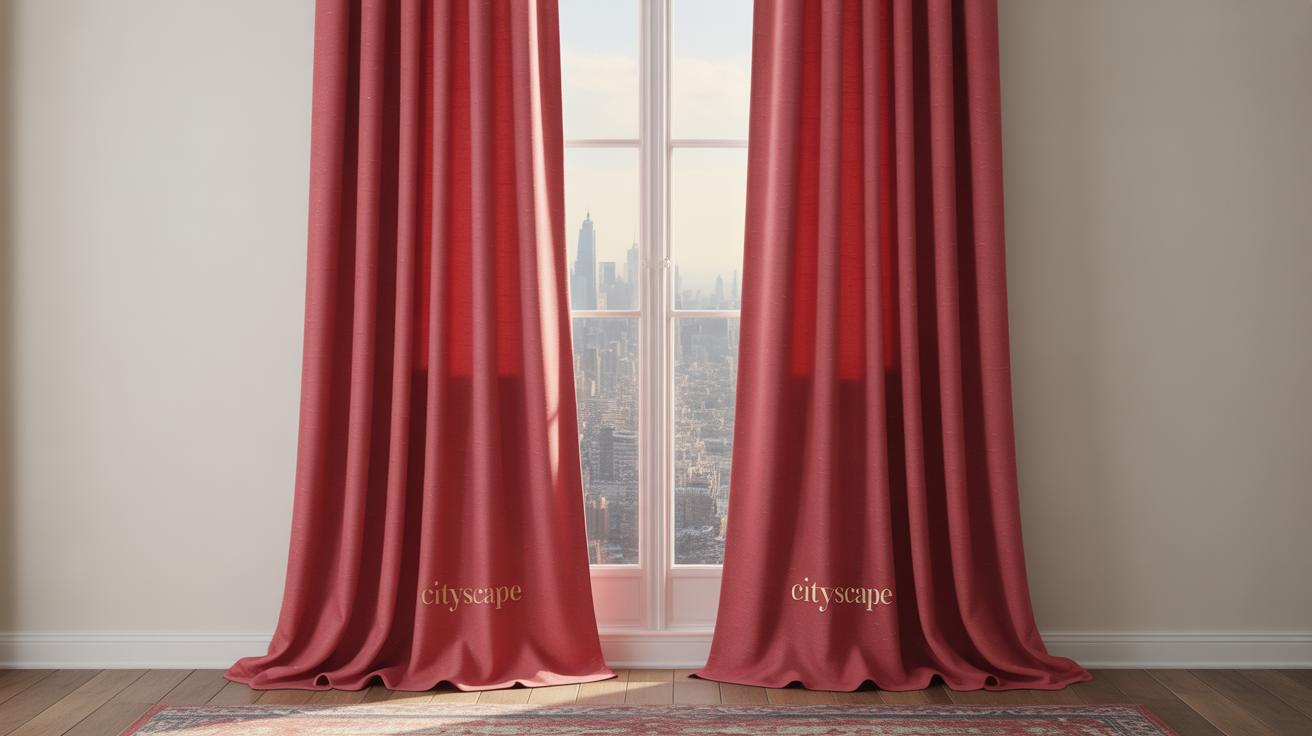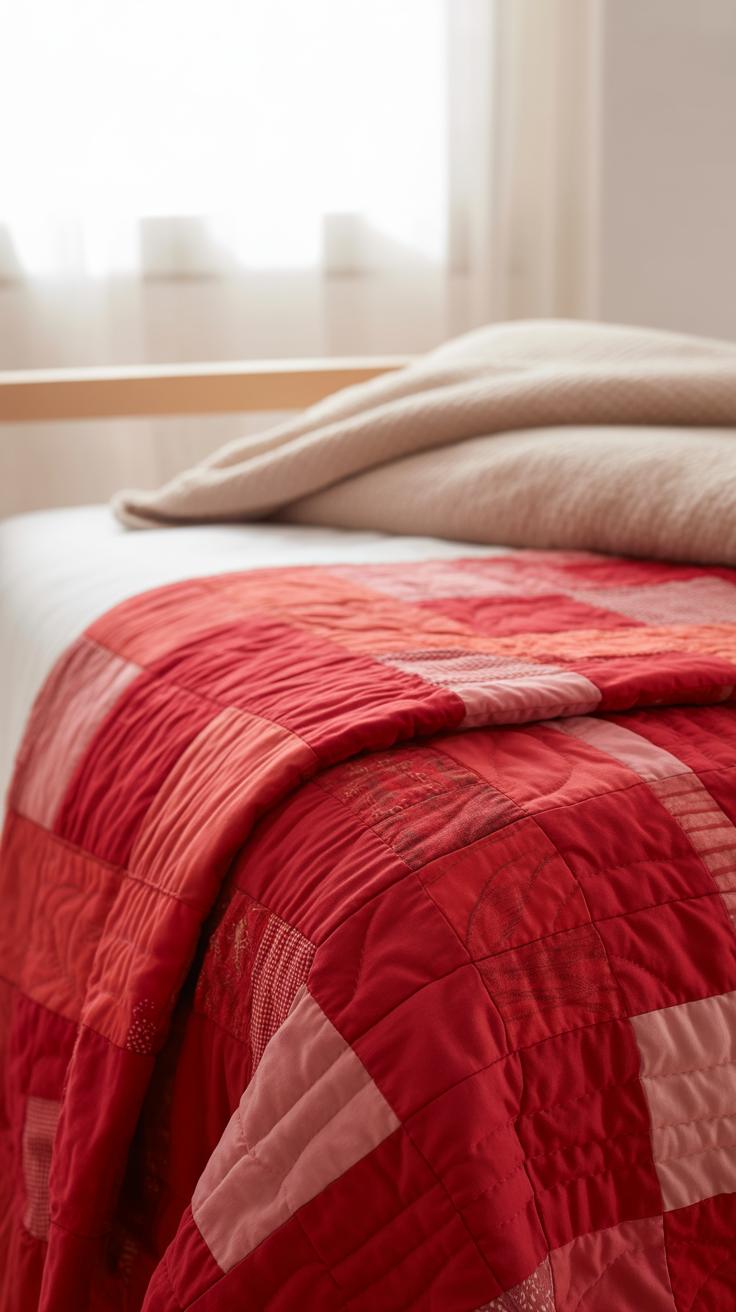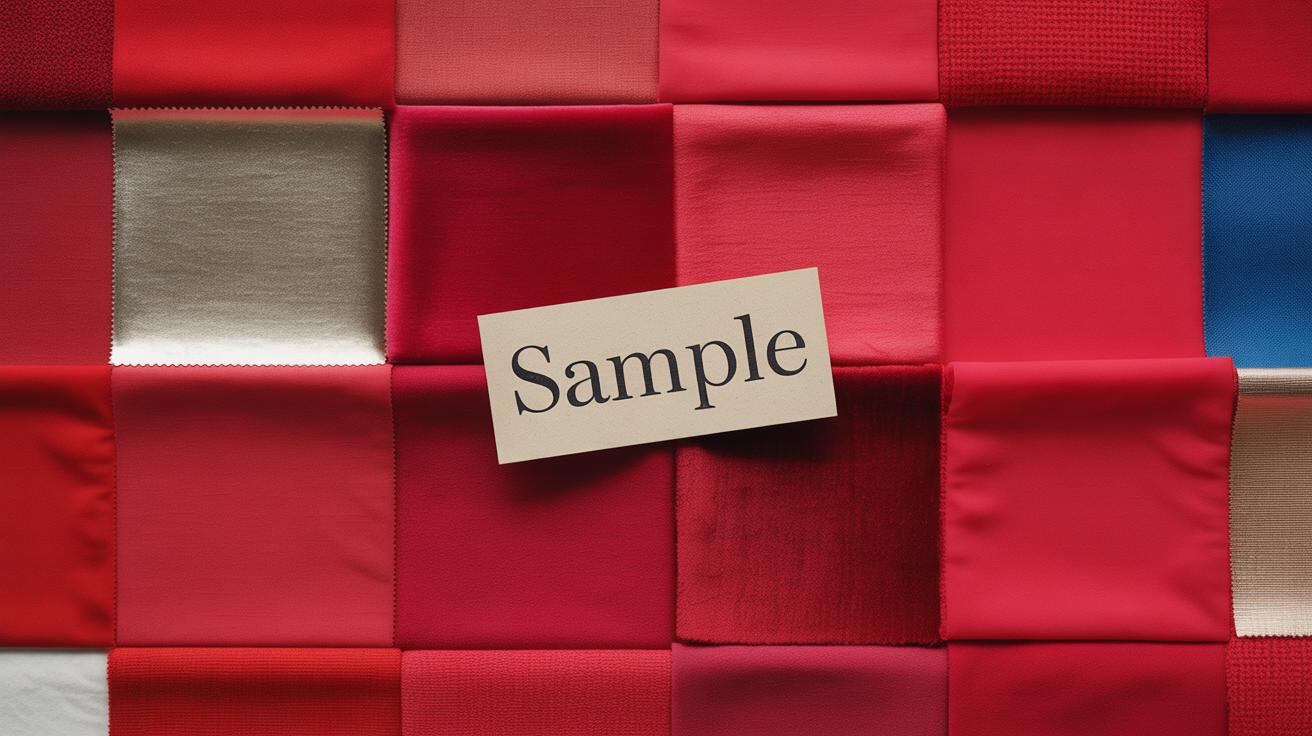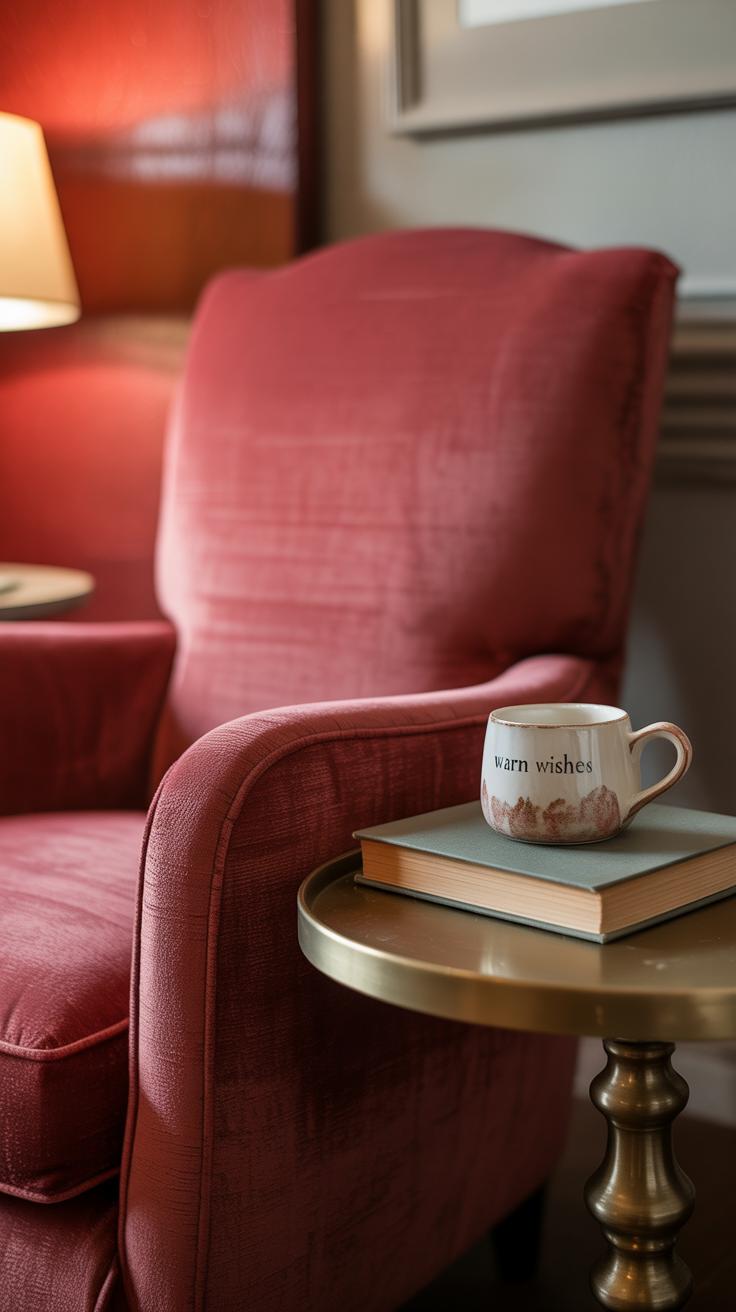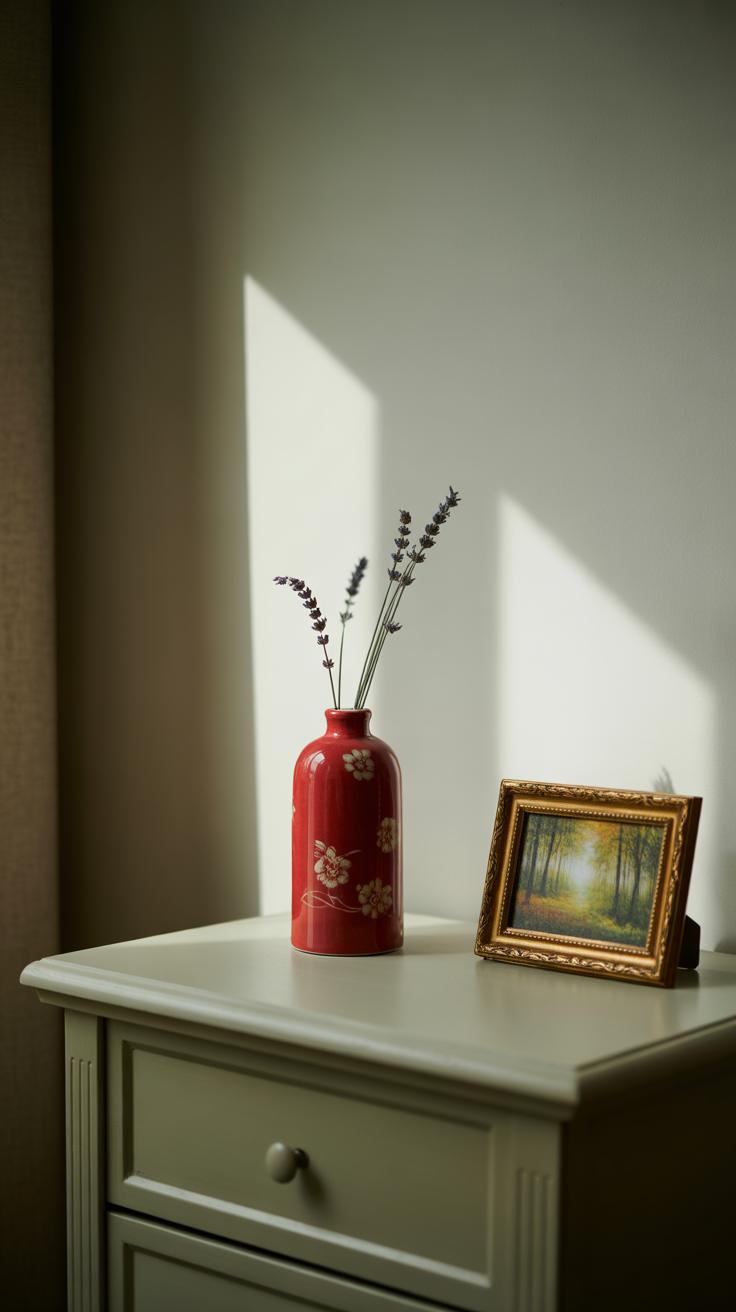Introduction
Your bedroom is a place to relax and recharge. Choosing the right color can help you feel calm and comfortable. Red is a strong color that can bring warmth and energy to your room. But using red in a bedroom might seem tricky because it is often seen as a bold color.
This article looks at Bedroom Red Ideas For Restful Warmth. We will explore how to use red in the bedroom to create a cozy and peaceful space. You will learn how to combine red with other colors and find the right balance to make your bedroom feel inviting and restful.
Understanding the Impact of Red in Bedrooms
Red is a color that instantly grabs attention, and in bedrooms, it stirs up a mix of feelings. It’s known for its ability to energize a space, sometimes making it feel warmer or more intense. But that doesn’t mean it always boosts positivity. Red can also evoke restlessness or heightened emotions if it’s too bold or overwhelming.
Psychologically, red triggers increased heart rate and alertness—it’s tied to passion, excitement, even urgency. So, using red in a bedroom calls for caution. You don’t want your space to become overly stimulating, especially when bedrooms should promote calmness and relaxation. It might surprise you, but the same red that feels cozy and inviting in one person’s room might feel overwhelming to another.
Choosing where and how to place red matters. Think about areas where you want warmth or a mood lift, but temper it with softer elements to keep the atmosphere peaceful. Red is powerful; this power means it needs restraint for restful sleep.
What Red Symbolizes in Home Design
In home decoration, red often stands for warmth, energy, and passion. It’s a color that brings life to spaces and evokes strong feelings. In bedrooms, red’s warmth can make the space feel snug—like it’s holding you gently.
But beyond coziness, red can inspire excitement or romance. Many couples choose red accents because the color connects to feelings of desire or emotional intensity. At the same time, it carries a sense of security, similar to the way a flickering fireplace comforts on a cold night. That mix of warmth and passion makes red special.
Still, red can sometimes conflict with the need for restfulness. So when you bring red into a bedroom, it’s not just about color preference but what you want that room to feel like—inviting energy or calm intimacy.
How Red Influences Your Sleep and Relaxation
Red’s effect on sleep is tricky. Since it encourages alertness and even raises blood pressure, too much red can disrupt your ability to wind down. But that doesn’t mean red has no place in a relaxation zone. It’s about balance.
You might wonder if a red bedroom can coexist with peaceful sleep. The answer is yes, if used thoughtfully—such as using red in smaller doses or with muted tones. Combining red with softer neutrals or calming textures helps temper its intensity.
For example, red throw pillows or a subtle red accent wall may add warmth without overstimulating the senses. The idea is to avoid an all-red environment if your sleep quality matters most. Small touches of red can spark comfort without jolting you awake.
Choosing the Right Shade of Red for Your Bedroom
Soft Reds That Create Calm
Soft reds like rose and coral have a gentle presence in a bedroom. They offer just enough warmth without crowding the space or overwhelming your senses. I’ve noticed that these shades feel less aggressive, almost like a whisper compared to brighter reds. They can help maintain a peaceful atmosphere while hinting at energy and life.
Think about how soft reds bring a subtle glow that doesn’t push you out of relaxation mode. These tones blend easily with neutral bedding or wood finishes, making them easier to live with long-term. If you’re hesitant about red but want a trace of its charm, these softer versions could be your best pick.
Some people might say softer reds can feel a bit dull, but if the goal is calmness that’s long-lasting, these colors often hit the mark. Plus, depending on lighting and surrounding colors, soft reds can feel surprisingly fresh or soothing.
Deep Reds for a Cozy Ambiance
Deep reds, like burgundy or brick, can transform a bedroom into a snug retreat. They introduce a sense of warmth and comfort that feels almost like a hug from the room itself. There’s a tangible thickness in the mood these shades create—almost as if the walls are holding onto quiet.
With deep reds, the atmosphere tends to tighten, pulling you in rather than letting the room breathe openly. It’s not for everyone, sure, but when done right, these shades balance richness with peace. You may find your bedroom feels more inviting, almost like a sanctuary that encourages you to slow down.
That said, deep reds require careful pairing with lighter accents or textures; otherwise, the room might end up feeling a bit heavy or closed off. Still, this weight can be exactly what some bedrooms need to feel restful and grounded. Have you ever walked into a deep red room and felt instantly settled? That’s the kind of effect at play here.
Using Red as an Accent Color
Red doesn’t have to dominate your bedroom to make a statement. In fact, using it as an accent color can be a smarter way to add warmth without feeling overwhelmed. Imagine a neutral room with just a few pops of red here and there—it can feel both cozy and balanced.
Try introducing red through softer touches like pillows, throws, or a rug. These elements catch the eye and invite you in without demanding all the attention. For example, a deep red throw pillow on a beige armchair can quietly brighten the space. Or a rug with subtle red patterns can ground the room and offer texture.
Artwork is another clever route. A painting or print featuring reds can personalize your room and break up larger neutral areas. It’s easier to switch out if your taste shifts, unlike repainting walls.
Red Accessories to Brighten Up Your Room
Not every object in your room needs to shout red to make an impact. Accessories come in all sorts of functional and decorative forms—and many work well to inject warmth.
- Red bedside lamps or lampshades
- Vases or decorative bowls in ruby tones
- Red picture frames to draw focus on your favorite photos
- Soft red blankets folded neatly on the bed
- Candles or candleholders in crimson hues
- Books with red spines stacked casually on shelves
These items contribute color in layers. They help you avoid a “loud” room but still feel inviting and more alive. I noticed that small touches like red slippers by the bed just make a chilly morning feel a bit more pleasant.
Mixing Red with Neutral Colors
Pairing red accents with neutrals feels natural, but it can be tricky. If your neutrals are too cool—think stark white or cold gray—the red might end up looking harsh or out of place.
Beiges, warm grays, and off-whites usually soften red’s intensity, making it feel resting rather than stimulating. The warmth of these neutrals offsets the strength of red, creating a visual pause where your eyes can rest.
Because neutrals tend to fade into the background, red accents jump out more without crowding the space. But there’s also room for spontaneity. Sometimes I mix a smoky gray wall with a few red cushions and can’t decide if it’s calming or kind of energizing—maybe both at once?
Pairing Red with Other Colors Effectively
Red can be a bold choice for a bedroom, and mixing it with the right colors matters if you want to avoid feeling overstimulated or restless. You don’t have to shy away from red just because it’s intense—it’s really about finding balance. Think of red as a strong statement, and the other colors as support roles that either soften or warm things up.
Cool Colors That Tone Down Red
Blues, greens, and soft grays work well to calm red’s energy. These tones kind of absorb red’s heat, making the space feel more grounded. Imagine a deep navy wall next to a red throw pillow, or a muted sage green bedspread paired with red accents. The contrast cools things down.
- Soft gray walls with red bedding soften red’s intensity without losing warmth.
- Teal or muted blue upholstery can balance red accents, offering peace to the eye.
- Subtle green plants near red décor keep the room feeling fresh and restful.
Cool colors don’t erase the warmth of red—they just give it room to breathe. It reminds me of a friend’s bedroom where gray walls made her red curtains feel enriched but not overwhelming.
Warm Colors to Enhance Red’s Comfort
If your goal is a truly cozy spot, pair red with warm yellows or gentle oranges. These colors share red’s warmth but can help create layers of comfort rather than a single burst. Think soft buttery yellows in linens or muted apricot tones on a rug alongside red accents—it feels like the space is wrapped in a gentle glow.
- Golden yellow throw blankets can blend nicely with deep reds for added softness.
- Light orange or coral lampshades echo red and invite warmth without shouting.
- Mixing terracotta or rust tones with reds adds natural, earthy warmth.
Sometimes warm colors feel a bit much with red, though. It depends on how saturated they are and the amount of light in your bedroom. You might ask yourself: do you want to feel energized or soothed? Warm shades lean toward warmth and calm, but they can also feel rich or heavy, so keep it subtle if you tend to prefer lighter spaces.
Pairing red with other colors isn’t about rules—it’s about what feels right for your space. Cool tones pull down red’s heat, while warm shades layer in comfort. Which direction feels more like your kind of rest?
Choosing Bedroom Furniture with Red Elements
Picking furniture with red details can feel a bit tricky. You want to introduce color without the room suddenly feeling loud or chaotic. Red upholstery, like a chair or an ottoman, often works best when it’s balanced with neutral tones around it. Velvet reds can add a touch of softness, though sometimes they risk looking too rich or heavy if overdone. Leather or fabric in muted reds can offer a gentler impact.
Red Bed Frames and Headboards
A red bed frame or headboard can anchor the room, serving as a natural focal point. But it’s easy to imagine it overpowering the space, especially if the red is too bright. Instead, think about deeper hues or matte finishes. These options create presence without blasting the senses. I’ve seen places where a faded red headboard blends charmingly with whites and grays, adding warmth without feeling like the walls are closing in.
Complementary Furniture and Décor
Once you have red furniture, it’s tempting to pair it with matching shades everywhere, but subtlety often works better. Try combining red pieces with simple, understated décor like natural wood nightstands or soft beige lampshades. Textures can soften the impact too; a linen throw pillow in a soft cream or taupe can calm the boldness of red upholstery. Think about how to create visual breathing room around those bursts of color. Would a plain wooden dresser work better than a painted one? Probably yes.
Red Bedding and Linens for Warmth
Using red bedding can instantly bring warmth and a sense of coziness to your bedroom. Red sheets, blankets, and pillows create a bold statement but can also feel inviting when chosen carefully. Think about soft, deep reds like burgundy or wine for a restful vibe, instead of bright scarlet which might feel a bit too intense for some nights.
Blankets and throws in richer red tones add a layer of comfort, both visually and physically. I remember swapping out my usual neutral duvet for a dark red one during winter—it made the room feel snug, like it was holding you close, though it took a bit of getting used to at first.
Pillows offer a great way to sprinkle in red without overwhelming the space. A few red cushions can tie the room together, especially paired with subtle neutrals or earth tones. Plus, they’re easy to change if you want to shift the mood without a full makeover.
Layering Red Bedding for Comfort
Layering is key when working with red linens. Using different shades—from faint rose to deep crimson—adds texture and avoids a flat look. You could lay down simple red sheets, then a slightly darker blanket, topped with a mix of red-hued pillows, maybe some velvet or linen for added softness.
When I first experimented with layering reds, it was tempting to choose just one shade and stick with it. But mixing tones surprisingly brought depth, making the bed feel softer and more inviting. It invites you to sink in rather than just look nice.
Besides color, also think about fabric texture. Cotton, velvet, or wool in reds can each change the room’s feel subtly. Layering these different fabrics works well to create a tactile richness that’s comforting, especially in cooler months.
Mixing Patterns and Solids
Balancing patterned and solid red linens keeps things visually interesting without feeling chaotic. Perhaps you have a set of red sheets with a small floral or geometric pattern—pair those with solid red pillowcases or blankets to ground the look.
Patterns can easily dominate if overdone, so it’s useful to limit them to one element, like a duvet cover or cushions. Mixing stripes or subtle prints with solid reds feels dynamic but still calming, especially if the patterns are subtle.
Try stepping back to see how the patterns interact. Sometimes a busy print can energize the room, while just the right solid piece calms it back down. I find this balance essential; too much pattern can be distracting, but just the right mix makes the bed feel thoughtful and warm.
Lighting Choices to Enhance Red in Bedrooms
Lighting plays a surprisingly big role in how red shades appear in your bedroom. The way light hits red walls or fabrics can either soften the intensity or make the color feel overwhelming. You might think red is just red, but under different lighting, it can lean toward cozy or a bit too fiery.
Warm Lighting to Complement Red
Using warm white or soft yellow bulbs can make red feel more inviting and less aggressive. Those tones bring out the depth in red hues, which helps the room feel soothing instead of loud. I often recommend bulbs around 2700K because they add a gentle glow that blends nicely with reds, making everything seem richer. Warm lighting seems to encourage a relaxed mood—just what you want in a bedroom. It’s almost as if the light hugs the red, making the space feel comfortable rather than bold.
Try lamps with fabric shades or low-wattage bulbs to get that warm effect without glaring brightness. The softer illumination lets the red breathe, which allows the color to sit calmly in the room.
Avoiding Harsh or Bright Lights
Bright or cool-toned lighting can easily turn red into something a bit too intense. It can make the walls or bedding look sharper, almost agitated, rather than restful. When harsh lights hit red surfaces, the color might feel like it’s shouting instead of whispering. That’s not usually the peaceful vibe you’re after in a bedroom.
So, avoid strong white LEDs or daylight bulbs. Instead, opt for dimmable lights or multiple light sources that offer control over brightness. That way, you can adjust the mood – brighter when needed, softer when winding down. It’s tricky but worth playing around with until you find a balance that feels natural. Because after all, lighting isn’t just functional in a red room. It shapes how relaxed or restless you actually feel when you’re there.
Incorporating Red in Bedroom Decor and Art
Adding red through art and decor can change the energy of your bedroom in subtle but meaningful ways. Red wall art, for example, doesn’t have to shout for attention—it can quietly draw the eye and create a focal point that feels warm and inviting. Think of pieces with deep, muted reds rather than bright scarlets. Abstract prints or nature-inspired images, such as autumn leaves or soft cherry blossoms, can bring a calm yet interesting vibe.
When it comes to decorations, try mixing in smaller red elements like ceramic vases, cushions, or candle holders. These touches add personality without overwhelming the space. I’ve noticed that even a single red object on a nightstand or dresser can make the room feel cozier, almost like it has a heartbeat.
Red curtains and rugs also play a key role. Heavy, textured red curtains can soften window frames and block light in a way that feels grounding. Lighter or sheer reds might add warmth without darkening the room too much. On the floor, a red rug can anchor furniture and bring softness underfoot. A faded red Persian rug, for example, lends both character and comfort.
But it’s tricky. Red isn’t always easy to place—it can feel too bold or cold if you’re not careful. Are you drawn to cooler or warmer reds? That choice will shape the whole room’s mood. Mixing reds takes some trial and error. It’s almost like the room needs to feel a bit lived in before the reds settle in perfectly.
Maintaining Balance in a Red Bedroom
Red is a strong color. It can fill a room with energy, but too much of it might leave you feeling restless. So, finding a balance is key to keeping your bedroom cozy and inviting rather than overwhelming.
One useful tip is to give the red elements some breathing room. Leave enough neutral space around reds—think off-white walls, soft beige linens, or light wood accents. These calmer areas help your eyes rest and keep the intensity in check. Too much red without a break can easily become distracting, even if you love the color.
At the same time, balance doesn’t mean everything must be neutral. It’s okay if some parts feel more vivid or bold. Sometimes, those unexpected bursts of color make the space feel more alive—just make sure you can pause and escape visually when you want to.
Also, consider how you personally respond to red. Some people find it comforting, others might notice it stirs up energy that keeps them awake. Think about your reaction over time. Adjust the shade, the amount, or the placement until the space feels right for you.
Remember, your bedroom should fit you, not just the design idea. If red feels too intense on the walls, try it in smaller hits—pillows, lamps, or a rug. Or if red makes you feel cozy and you want more, layering different textures and shades can deepen the warmth without becoming overpowering.
Does your red bedroom feel like a retreat or more like a room that demands your attention? Finding that personal line is where the design starts to work best.
Conclusions
Using red in your bedroom can add warmth and comfort. It can also help you feel energized and happy. The key is to use the color in ways that make you feel calm and peaceful. Soft reds, red accents, and pairing red with cool colors can create a balanced look.
Think about your personal style and how red makes you feel. Try out different shades and decorations until you find a mix that works for you. Your red bedroom can become a perfect place for rest and warmth, giving you a relaxing space every day.

